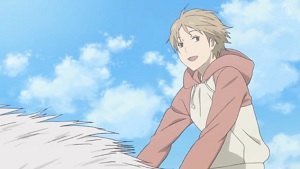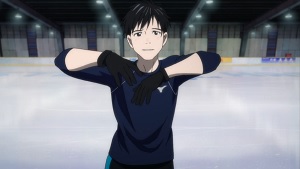written by David Steffen
The Ray Bradbury Award is given out every year with the Nebula Awards but is not a Nebula Award in itself. Like the Nebula Awards, the final ballot and the eventual winner are decided by votes from members of SFWA, the Science Fiction and Fantasy Writers of America (which despite the name has an international membership).
I like to use the award every year as a sampler of well-loved science fiction and fantasy movies from the previous year. I have been very happy with this tactic, and this year is no exception.
Not included in this list, because I don’t usually seek out individual episodes of TV shows that are nominated is the episode of WestWorld titled “The Bicameral Mind”.
 1. Arrival, Directed by Denis Villeneuve, Screenplay by Eric Heisserer, 21 Laps Entertainment/FilmNation Entertainment/Lava Bear Films/Xenolinguistics
1. Arrival, Directed by Denis Villeneuve, Screenplay by Eric Heisserer, 21 Laps Entertainment/FilmNation Entertainment/Lava Bear Films/Xenolinguistics
I reviewed this movie here on Diabolical Plots in December.
Arrival is a science fiction first contact story starring Amy Adams as Louise Banks, one of the linguists recruited by the US government to learn how to communicate with the aliens dwelling inside one of the twelve giant ships that have suddenly appeared all over the world–this one in Montana. Why are the aliens here? What do they want? The world trembles on the brink of war from the tension of not knowing, and it is up to Louise and her team to find out the truth.
This movie is tense and compelling with compelling characters and cool SFnal ideas based around the classic challenge of first contact. It is based on a story written by Ted Chiang, one of my favorite short fiction authors, and is well worth seeing.
2. Zootopia, Directed by Byron Howard, Rich Moore, & Jared Bush, Screenplay by Jared Bush & Phil Johnston; Walt Disney Pictures/Walt Disney Animation Studios
Zootopia is an animated buddy-cop movie that takes place in the city of Zootopia where predators and prey have learned to live peacefully side by side. Or is it so peacefully? Judy Hopps (Ginnifer Goodwin) has fulfilled her lifelong dream of becoming the first rabbit on the Zootopia police force, but no one respects her because rabbits have a reputation for being timid and stupid. She sets out to prove herself and she ends up being assigned to look into a case of a missing otter, one of twelve predators that has disappeared without a trace in recent days, and she has an ultimatum to resign if she doesn’t solve the case. She recruits fox con man Nick (Jason Bateman) to help her.
Zootopia is one of those children’s movies that works well for all ages. Looking past the childish elements, it is quite a good buddy-cop movie at its core with interesting puzzles to solve that are unique to the predator-prey-living-in-harmony situation. Highly recommended, fun and interesting with lots of celebrity voices.
 3. Doctor Strange, Directed by Scott Derrickson, Screenplay by Scott Derrickson & C. Robert Cargill, Marvel Studios/Walt Disney Studio Motion Pictures
3. Doctor Strange, Directed by Scott Derrickson, Screenplay by Scott Derrickson & C. Robert Cargill, Marvel Studios/Walt Disney Studio Motion Pictures
Steven Strange (Benedict Cumberbatch) is a world-renowned surgeon, the best of his profession. Arrogant and aloof, he wants nothing more than to immortalize his name forever in the field of medical science. After a violent car accident that damages his hands, he desperately seeks out any way to heal his broken hands–starting with every available experimental medical procedure and eventually moving on to the mystical healing arts. Following the trail from a man who had fully recovered from a paralyzing spinal injury, he finds Kamar-Taj, a temple of the mystic arts led by the Ancient One (Tilda Swinton). There he is mentored by the sorceror Mordo (Chiwetel Ejiofor) to begin his training. Strange takes to the training quickly, and soon needs every ounce of skill he has acquired to fight against Kaecilius (Mads Mikkelsen), a former sorceror of Kamar-Taj who left the temple after refusing to accept the limits on their studies placed by the Ancient One.
I was surprised at how much I liked this movie–it seemed like it was a character and story that would be hard to make it feel modern without it being corny but they pulled it off reasonably well. My favorite parts were the depictions of the Mirror World, a reflection of the real world that is infinitely malleable to manipulation, and is often used as dueling grounds for sorcerors since the destruction there does not touch the real world–they turn ordinary surroundings into treacherous fighting arenas filled with traps made of everyday things. Dr. Strange had a quite decent character arc throughout the story, so arrogant at the beginning and finally finding some humility as he fights on. I thought the method Strange used for the final boss was particularly clever, not one I expected.
 4. Kubo and the Two Strings, Directed by Travis Knight, Screenplay by Mark Haimes & Chris Butler; Laika Entertainment
4. Kubo and the Two Strings, Directed by Travis Knight, Screenplay by Mark Haimes & Chris Butler; Laika Entertainment
Kubo (Art Parkinson) is a young boy who makes his money begging in the town during the day while his mother suffers from a strange affliction where she is in a trance from sunrise to sunset, and she demands that he always keep his monkey charm near him and never go out at night for his own safety, so that his aunts and grandfather the Moon King will not come and steal Kubo’s one remaining eye. He tells stories of the warrior Hanzo, who is Kubo’s missing father, and plays out the performances with origami which he animates magically with a musical stringed instrument of his mother’s. One day he hears of a festival where the townspeople are once a year allowed to speak to the souls of their dead loved ones and Kubo breaks his mother’s rule in the hopes that he will be able to speak to his missing father. But he soon learns that his mother’s rule is not just fantasy, when his aunts do come and find him and he flees and is only saved at the last moment by his mother rushing to his rescue, magically sending him far far away. His monkey charm has come to life (Charlize Theron) and they set out to escape the Moon King’s pursuit and continue Hanzo’s quest to defeat the Moon King.
Action packed, fun, and more than a little scary in parts–this story has a lot of fun and a lot of emotional moments. The aunts in particular are super super creepy, especially when they first arrive as floating masked apparitions who always speak in unison in a creepy singsong voice. Each step of their journey is a major trial that Kubo’s father had failed before him, and the odds are against him but he has some of his powers inherited from his mother as well as the help of his animated monkey charm.
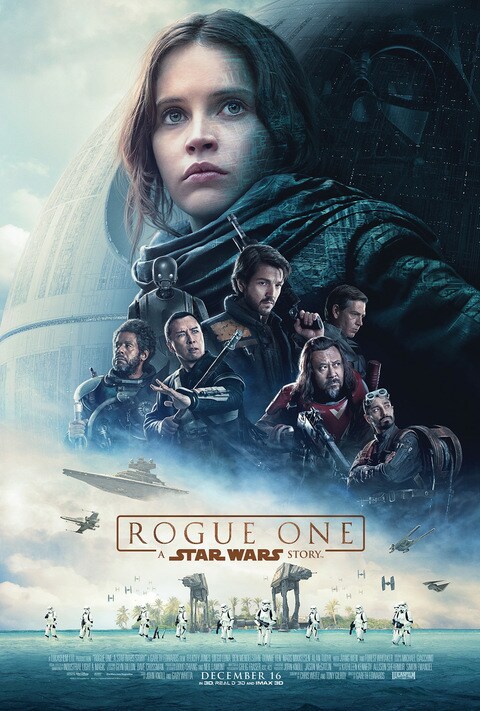 5. Rogue One: A Star Wars Story, Directed by Gareth Edwards, Written by Chris Weitz & Tony Gilroy; Lucusfilm/ Walt Disney Studio Motion Pictures
5. Rogue One: A Star Wars Story, Directed by Gareth Edwards, Written by Chris Weitz & Tony Gilroy; Lucusfilm/ Walt Disney Studio Motion Pictures
The newest in the Star Wars movies, albeit not one of the main numbered sequence. This story takes place just before Star Wars: New Hope (the original movie). Galen Orso (Mads Mikkelsen), former scientists for the Galactic Empire, has been living in seclusion for some time, but he is abducted and brought back to work on his grandest project yet–the weapon that will come to be known as the Death Star. When he is taken, his young daughter Jyn (Felicity Jones) escapes and is taken in by extremist rebel Saw Gerrera (Forrest Whitaker). Fifteen years later, the Death Star is nearly complete and Imperial pilot Bodhi Rook (Riz Ahmed) has defected from the Empire with plans for the weapons to give to the rebels, but the pilot falls into the hands of Gerrera, who is just as violent against other rebels as against the Empire. Jyn is captured and recruited to communicate with Gerrera to try to recover the plans.
It was exciting and fun to get to see this important piece of Star Wars lore that we only heard about the results of in passing. The main complaint I heard about the movie before it came out was that the cast was so large that you never really got to know anyone, and I think there’s some truth to that, although I did have a great deal of affection for the protagonist Jyn, and also for spiritual warrior Chirrut (Donnie Yen) and the mercenary Baze Malbus (Wen Jiang) who were weird and quirky. Unfortunately because of the nature of the movie, and the fact that none of these characters were in the original trilogy, you can probably guess how they end up, and you also know that they succeeded since that’s what made the ending of A New Hope possible. But it’s still a fun movie worth watching, even if the characters aren’t as well developed and the ending is already known.


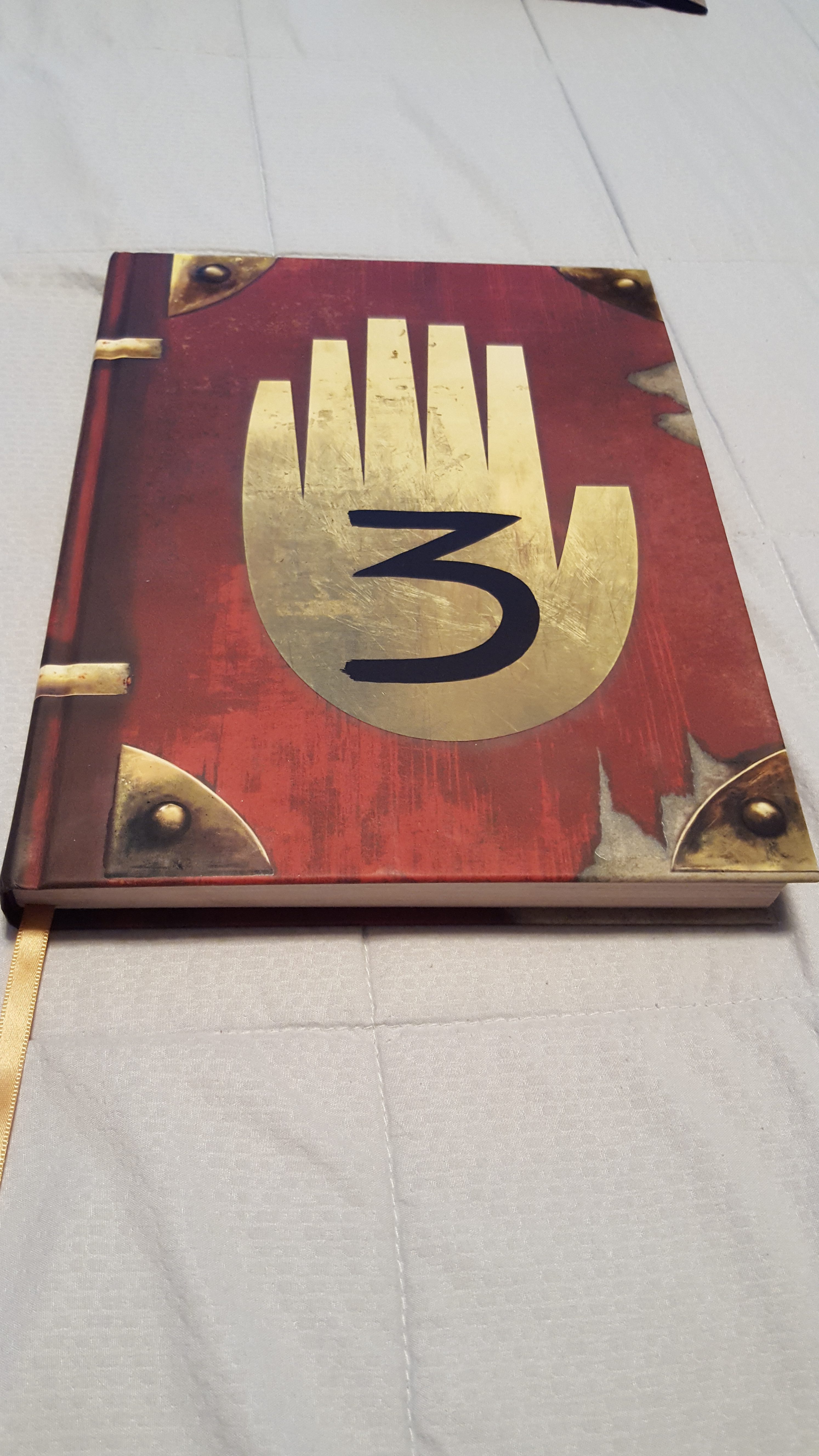 Have you seen the Disney XD show Gravity Falls, created by Alex Hirsch? If you haven’t, you should! And you should probably do it before you read this book, because it’s a tie-in that will have major spoilers for the show–I think it will generally work better watching the show first, and then reading the book.
Have you seen the Disney XD show Gravity Falls, created by Alex Hirsch? If you haven’t, you should! And you should probably do it before you read this book, because it’s a tie-in that will have major spoilers for the show–I think it will generally work better watching the show first, and then reading the book. 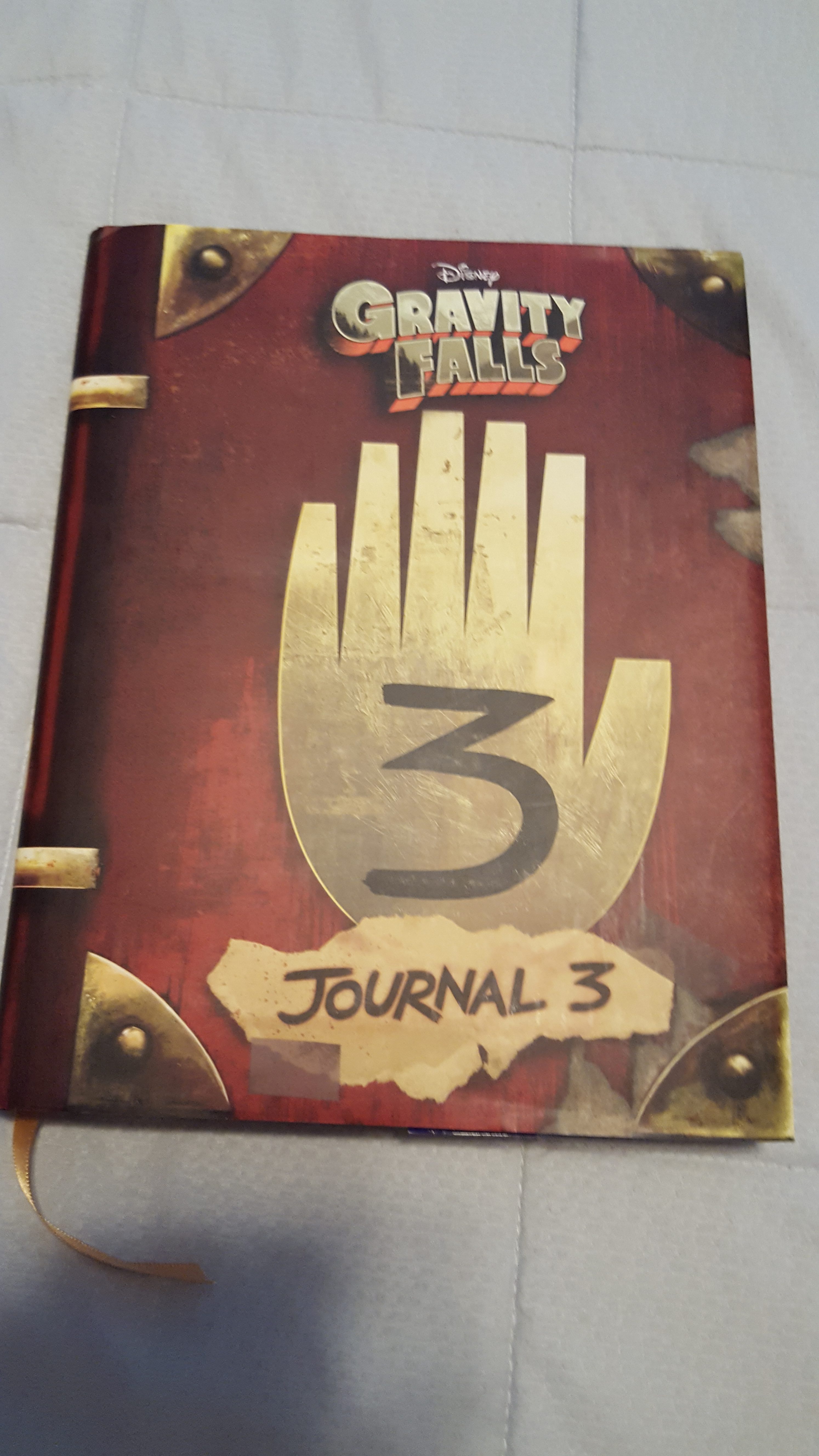 I don’t usually talk much about book design in the reviews, but this book is really really nice. Usually I’m kindof ambivalent about book jackets, because I’m honestly not sure what purpose they serve. But in this case, the book jacket includes all the stuff that you would expect to see on a book cover–the title on the cover, the title on the spine, the blurbs on the backet, the bar code. But if you remove the book jacket, the book cover matches quite closely to the appearance of the journal on the show–no title on the spine, no blurbs or barcode, and the cover is just a six-fingered golden hand with a number “3” drawn on it. It’s very eye-catching and consistent with the show which is cool. AND, the inside of the book jacket has extra illustrations–blueprints of science fictional contraptions from the series, images which don’t appear anywhere else. The book also comes with one of those nice attached-to-the-binding silky bookmarks that I’m used to only seeing in hymnals at church–very nice touch.
I don’t usually talk much about book design in the reviews, but this book is really really nice. Usually I’m kindof ambivalent about book jackets, because I’m honestly not sure what purpose they serve. But in this case, the book jacket includes all the stuff that you would expect to see on a book cover–the title on the cover, the title on the spine, the blurbs on the backet, the bar code. But if you remove the book jacket, the book cover matches quite closely to the appearance of the journal on the show–no title on the spine, no blurbs or barcode, and the cover is just a six-fingered golden hand with a number “3” drawn on it. It’s very eye-catching and consistent with the show which is cool. AND, the inside of the book jacket has extra illustrations–blueprints of science fictional contraptions from the series, images which don’t appear anywhere else. The book also comes with one of those nice attached-to-the-binding silky bookmarks that I’m used to only seeing in hymnals at church–very nice touch.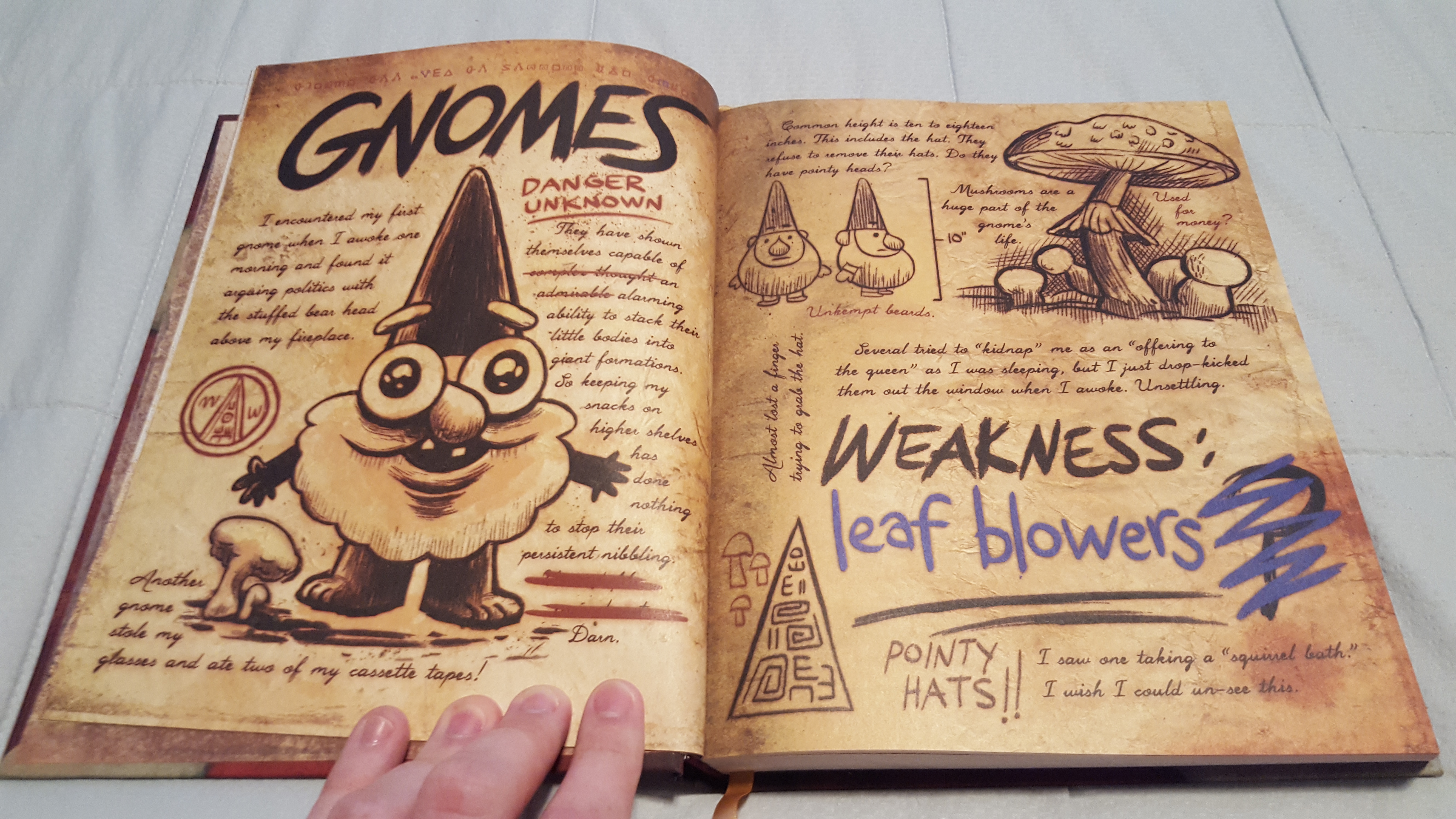 Inside the book there are three distinct sections. The first is the contents of the journal before Dipper finds it in episode 1 of the series. You see these pages in the show, but usually only briefly and you can only make out the titles and major illustrations. The book contains all of those, as well as some that I don’t think ever appear in the show, so this part is my favorite part of the journal, because you are reading what Dipper read on his own. The second part happens DURING the show, and is Dipper writing new pages into the journal. I love the show, but I found this the weakest section because I had already seen the episodes, so it felt redundant, and each episode covered in the book only covered a couple pages, so it also felt rushed and without the characteristic humor of the show. The third section happens near the end of the series, after a major event that I won’t spoil for you, but which changes the nature of the content of the journal again. The design all makes sense, but I found that middle section pretty weak.
Inside the book there are three distinct sections. The first is the contents of the journal before Dipper finds it in episode 1 of the series. You see these pages in the show, but usually only briefly and you can only make out the titles and major illustrations. The book contains all of those, as well as some that I don’t think ever appear in the show, so this part is my favorite part of the journal, because you are reading what Dipper read on his own. The second part happens DURING the show, and is Dipper writing new pages into the journal. I love the show, but I found this the weakest section because I had already seen the episodes, so it felt redundant, and each episode covered in the book only covered a couple pages, so it also felt rushed and without the characteristic humor of the show. The third section happens near the end of the series, after a major event that I won’t spoil for you, but which changes the nature of the content of the journal again. The design all makes sense, but I found that middle section pretty weak.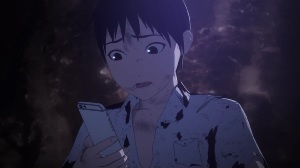 Ajin initially bears a superficial resemblence to Tokyo Ghoul, in that the protagonist goes from normal human being to a monster in the first episode. From there Kei Nagai undergoes a similar journey from lamenting his fate to accepting what he is, but Kei’s journey progresses faster and he takes a decidedly different tack when it comes to dealing with what he’s become.
Ajin initially bears a superficial resemblence to Tokyo Ghoul, in that the protagonist goes from normal human being to a monster in the first episode. From there Kei Nagai undergoes a similar journey from lamenting his fate to accepting what he is, but Kei’s journey progresses faster and he takes a decidedly different tack when it comes to dealing with what he’s become.
